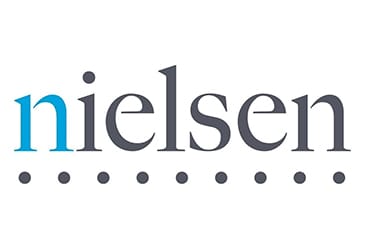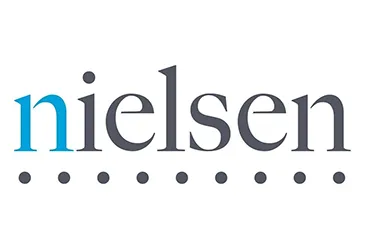ORLANDO, Fla. — Nielsen announced on Tuesday its predictions for 2020 and the decade ahead from Gartner IT Symposium/Xpo. Built on the most holistic and predictive view of consumer purchasing habits, Nielsen anticipates that 2020 will represent an inflection point for trust and transparency, 5G and time to purchase in the U.S. retail and consumer landscape.

Nielsen’s forward-looking vision is fueled by the open, cloud-based Nielsen Connect platform, which helps CPG manufacturers and retailers more easily spot emerging trends and diagnose performance gaps. Leading consumer packaged goods (CPG) retailers and brands, including P&G, are successfully leveraging Nielsen’s tech-driven, cloud-based approach to delivering insights. As noted by John Myers, director, North America Analytics and Insights, P&G, “We see Nielsen’s data and cloud-based technology as important levers that will benefit P&G U.S. as we develop breakthrough Analytics & Insights to help us better serve billions of consumers around the world.”
High-level predictions include the following:
- Privacy concerns and misinformation will threaten brand credibility. Trust in today’s society is at a low point—yet consumers still expect that brands know them and cater to them. Privacy legislation would not solve every issue of truth and transparency. Big brands will have to confront and counteract the consequences of social network attacks, such as activists using deepfake to destroy the credibility of a brand. Trust underpins the privacy, misinformation tug of war, and the torch must be carried by both businesses and consumers.
- Transparency will be tomorrow’s brand currency. Brands across all industries will have an opportunity to deliver on the “Healthy for Me & Healthy for We” expectations consumers have. Interest in what was previously considered ‘behind-the-scenes’ information about a company’s operational footprint will become mainstream topics of conversation. This will tee up opportunities for companies across industries to grow trust and authenticity while delivering on the need for urgent action on climate change.
- Manufacturers will produce locally to win globally. With the winds of protectionism, trade wars, slower overall growth and increasing effects—and awareness—of climate change, we’re entering a new era in consumerism. With the duel impetus of tariffs and consumer alignment with locally sourced products and waste reduction, manufacturers will face increased pressure to produce locally, import fewer goods and search for economic differentiation. Supply chains will continue to be reimagined to deliver on consumers’ increasing desire for sustainable products.
- Smart supply chains will anticipate and react to consumer demands. As retailers increasingly focus on owning the supply chain from start to finish and further blur the line with manufacturers as they grow their private label brands, the industry will gradually shift to more granular, end-to-end supply chain analytics. Brands and retailers who win the 2020s will succeed not based on their front-end pricing and promotion analytics, but their granularity and end-to-end depth of their data science.
- 5G will revolutionize the Internet of Things for retail. With 5G, the Internet of Things finally becomes a mainstream reality, providing end consumers with access to more data at their fingertips with virtually no response delay—so they’re less limited in their ability to come to an informed decision on the retailers and brands they want to work with. Meanwhile, 5G will transform smart packaging and delivery, through applications like smart sensors that can collect real-time data to ensure viable internal package conditions for food and medications.
- Time and trust will dictate consumer relationships with retail. Increasingly frictionless commerce in both a click and brick world will change the game for retail. From pop-up shops with cashier-less payment to automated warehouses in urban centers, fusing the overall consumer experience with smarter, intuitive tech is the future, as consumers require zero resistance from discovery to assessment to shopping to payment to fulfillment. Speed and convenience will drive behavior—and every millisecond reduced is a battle won.
- Try-before-you-buy will come into consumer homes. There’s a push-and-pull between the in-store experience and the convenience of shopping at home. Augmented reality (AR) technologies will improve, and 5G will indirectly reduce barriers to entry, based on the shift to cloud and enablement of smartphones to be AR devices. Yet AR can also improve the brick-and-mortar experience with special in-store promotions accessible via smartphones. As such, mobile, AR-based buying will reach a critical mass—and up the ante for brick-and-mortar to keep consumers coming back with experiential benefits.
“The true value of today’s emerging technologies has remained in the hype cycle for much of retail and CPG, but the dawn of a new decade will see a rapid acceleration in meaningful use cases,” said Jeanne Danubio, president, Nielsen Connect, North America. “From the transformative effect of 5G to the increase in frictionless commerce—all underpinned by trust and transparency—the consumer landscape will become increasingly complex. We are eager to continue providing our clients with the data to decide, thereby shaping a smarter market for our clients, in 2020 and beyond.”
For additional information on Nielsen’s predictions for the future of retail, CPG and technology, please visit the Nielsen booth #808 at the Gartner IT Symposium/Xpo. Nielsen is also cited in Gartner’s March 2019 report, “Best Practices in Developing Retail Curbside Fulfillment.”









